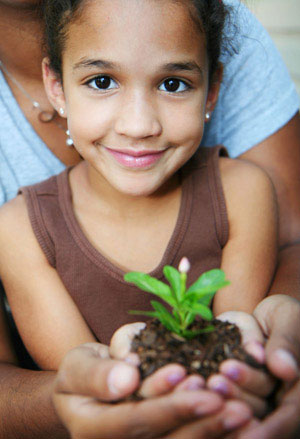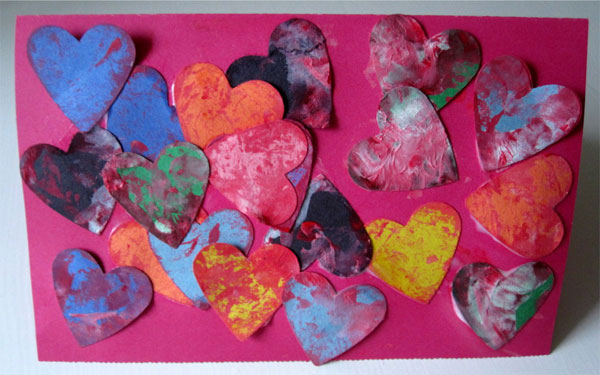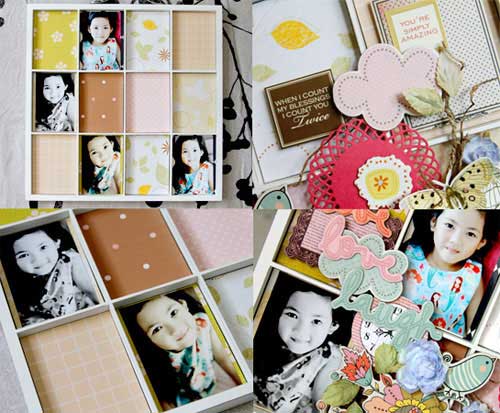Let your child discover creative devices without despairing about their inability to stay within lines, or to be clean. At three and a half years, Anita was sent to a drawing teacher. Her nursery teachers remark on Anitas poor "hand to eye coordination" had worried her mother. Soon Anita would have school admission interviews and her mother was taking no risks. Patiently, the drawing teacher taught Anita to hold a crayon correctly. She learnt to follow the stencils. She learnt to colour shapes, she learnt flowers are red and water is to be coloured blue. She would rather be making puppets out of old socks and bits of wrapping paper. Or experimenting styles with her dolls hair. The result? Anitas drawing improved, but she started disliking even cutting up the magazine pictures and making puppets. In this articleDont keep correcting herUnderstand the stagesMake learning funGet creative yourselfEncourage self expressionDont keep correcting her "No, no, not like that. Let me show you!" You may not have sent your child to classes. But does this sentence crop up when you draw with your child? This is when the play stops being fun. It gets frustrating for both, it stops being about the child. Stop correcting your child all the time. Theres no right and wrong in art. Understand the stages Children go through a normal progression of writing skills. In the earliest stages children are mostly interested in the marks that a pencil or a crayon leaves. A toddler is learning how to make the design she wants and does so by experimenting with making large, random marks on the paper. Later marks become more deliberate, such as small circles or scribbles. Make learning fun Remember how magically a picture appeared when you joined the dots? Remember the magic and help your child discover it again. Give her bits of wrapping paper, feathers, old birthday cards, buttons and let her discover what she can make out of them. Its about touching different things, about getting glue on the paper and her fingers. Its about the elephant (or car, or girl, or mamas picture) that she says she has made rather than the mess she creates. Let your child scribble on a large drawing sheet and ask her what she has drawn. The stories she tells you will also teach her to verbally express what she is thinking. Write down the stories and have fun reading them when she is older. Compliment her and get down to drawing with her. Label what you are doing too, "Let me draw a house here, what kind of curtains should we have?" Focus on exploring ideas rather than teaching. Get creative yourself Instead of setting a "task" of colouring a drawing sheet, would it not be more fun to paint a part of the kitchen table? The karrappa counter tops we use in our kitchens are easily washable and splashing paint around is also a part of learning. Giving them patterns to cut, paste and make their own cards is more interesting than training them to draw circles and triangles (how dull and repetitive!). Encourage self expression Instead of teaching them how to sit down to complete a task to perfection, teach them to express what is in their hearts and minds. At an age where "no" is a frequently used word, and the things she can control are so few, dont take away her freedom. Let her do what she thinks is right. Let her paint herself instead of the paper, let her end up gluing her artwork and the protective newspaper together. Take the artwork out when she is older and marvel at how she has improved. Your child has plenty of time to develop coordination and attention to detail. Once they start school, everything will get so structured. There is plenty of time to "stay within the lines" in art and otherwise.
Let your child discover creative devices without despairing about their inability to stay within lines, or to be clean. At three and a half years, Anita was sent to a drawing teacher. Her nursery teacher's remark on Anita's poor "hand to eye coordination" had worried her mother. Soon Anita would have school admission interviews and her mother was taking no risks.
Patiently, the drawing teacher taught Anita to hold a crayon correctly. She learnt to follow the stencils. She learnt to colour shapes, she learnt flowers are red and water is to be coloured blue.
She would rather be making puppets out of old socks and bits of wrapping paper. Or experimenting styles with her doll's hair.
The result? Anita's drawing improved, but she started disliking even cutting up the magazine pictures and making puppets.
Don't keep correcting her
"No, no, not like that. Let me show you!" You may not have sent your child to classes. But does this sentence crop up when you draw with your child? This is when the play stops being fun. It gets frustrating for both, it stops being about the child. Stop correcting your child all the time. There's no right and wrong in art.
Understand the stages
Children go through a normal progression of writing skills. In the earliest stages children are mostly interested in the marks that a pencil or a crayon leaves. A toddler is learning how to make the design she wants and does so by experimenting with making large, random marks on the paper. Later marks become more deliberate, such as small circles or scribbles.
Make learning fun
Remember how magically a picture appeared when you joined the dots? Remember the magic and help your child discover it again.
Give her bits of wrapping paper, feathers, old birthday cards, buttons and let her discover what she can make out of them. It's about touching different things, about getting glue on the paper and her fingers. It's about the elephant (or car, or girl, or mama's picture) that she says she has made rather than the mess she creates.
Let your child scribble on a large drawing sheet and ask her what she has drawn. The stories she tells you will also teach her to verbally express what she is thinking. Write down the stories and have fun reading them when she is older.
Compliment her and get down to drawing with her. Label what you are doing too, "Let me draw a house here, what kind of curtains should we have?" Focus on exploring ideas rather than teaching.
Get creative yourself
Instead of setting a "task" of colouring a drawing sheet, would it not be more fun to paint a part of the kitchen table? The karrappa counter tops we use in our kitchens are easily washable and splashing paint around is also a part of learning.
Giving them patterns to cut, paste and make their own cards is more interesting than training them to draw circles and triangles (how dull and repetitive!).
Encourage self expression
Instead of teaching them how to sit down to complete a task to perfection, teach them to express what is in their hearts and minds. At an age where "no" is a frequently used word, and the things she can control are so few, don't take away her freedom. Let her do what she thinks is right. Let her paint herself instead of the paper, let her end up gluing her artwork and the protective newspaper together. Take the artwork out when she is older and marvel at how she has improved.
Your child has plenty of time to develop coordination and attention to detail. Once they start school, everything will get so structured. There is plenty of time to "stay within the lines" in art and otherwise.































